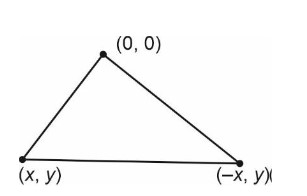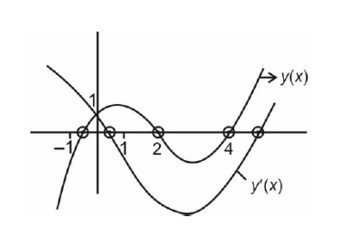If Σᵢ₌₁ⁿ(xᵢ-a)=n and Σᵢ₌₁ⁿ(xᵢ-a)²=na, (n,a>1) then the standard deviation of n observations x₁,x₂,...,xₙ is:
If Σᵢ₌₁ⁿ(xᵢ-a)=n and Σᵢ₌₁ⁿ(xᵢ-a)²=na, (n,a>1) then the standard deviation of n observations x₁,x₂,...,xₙ is:
Option 1 -
a-1
Option 2 -
n√(a-1)
Option 3 -
√(n(a-1))
Option 4 -
√(a-1)
-
1 Answer
-
Correct Option - 4
Detailed Solution:S.D.=√ (Σ (x-a)²/n - (Σ (x-a)/n)²) = √ (a-1).
Similar Questions for you
f' (x) = 12sin³xcosx+30sin²xcosx+12sinxcosx = 3sin2x (2sin²x+5sinx+2) = 3sin2x (2sinx+1) (sinx+2).
In [-π/6, π/2], sinx+2>0. 2sinx+1>0 except at x=-π/6. sin2x>0 for x∈ (0, π/2), <0 for x∈ (-π/6,0).
So f' (x)<0 on (-π/6,0) (decreasing) and f' (x)>0 on (0, π/2) (increasing).
y (x) = 2x – x2
y? (x) = 2x log 2 – 2x
M = 3
N = 2
M + N = 5

Area of ?
->
->Area (D) = |xy| = |x (– 2x2 + 54x)|
at x = 0 and 18
->at x = 0, minima
and at x = 18 maxima
Area (D) = |18 (– 2 (18)2 + 54 × 18)| = 5832
y = x3
Equation of tangent y – t3 = 3t2 (x – t)
Let again meet the curve at
=> t1 = -2t
Required ordinate =
Given curves
&
Equation of any tangent to (i) be y = mx +
For common tangent (iii) also should be tangent to (ii) so by condition of common tangency
OR 36m2 + 16 = 31 + 31m2
->m2 = 3
Taking an Exam? Selecting a College?
Get authentic answers from experts, students and alumni that you won't find anywhere else
Sign Up on ShikshaOn Shiksha, get access to
- 66k Colleges
- 1.2k Exams
- 680k Reviews
- 1800k Answers

